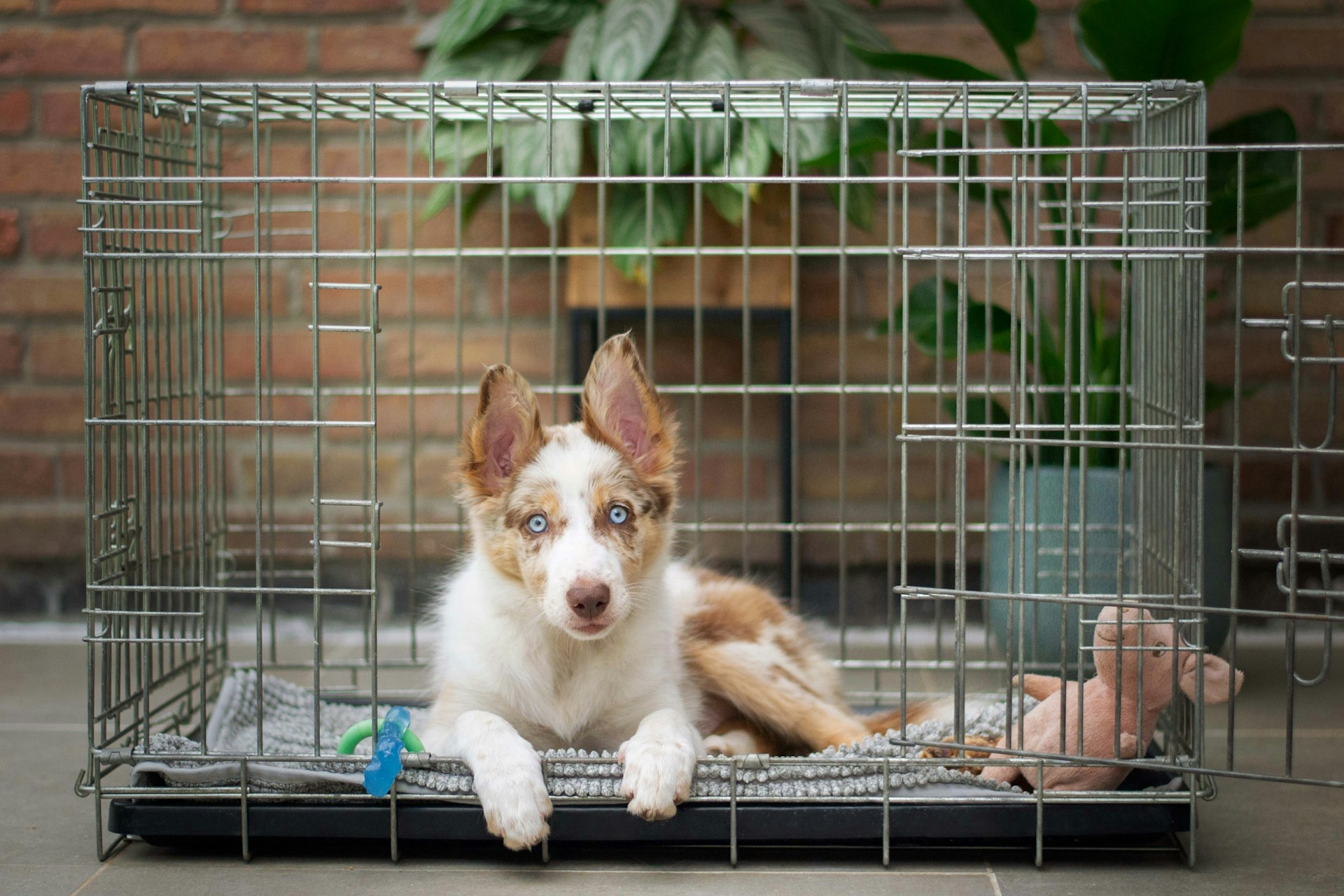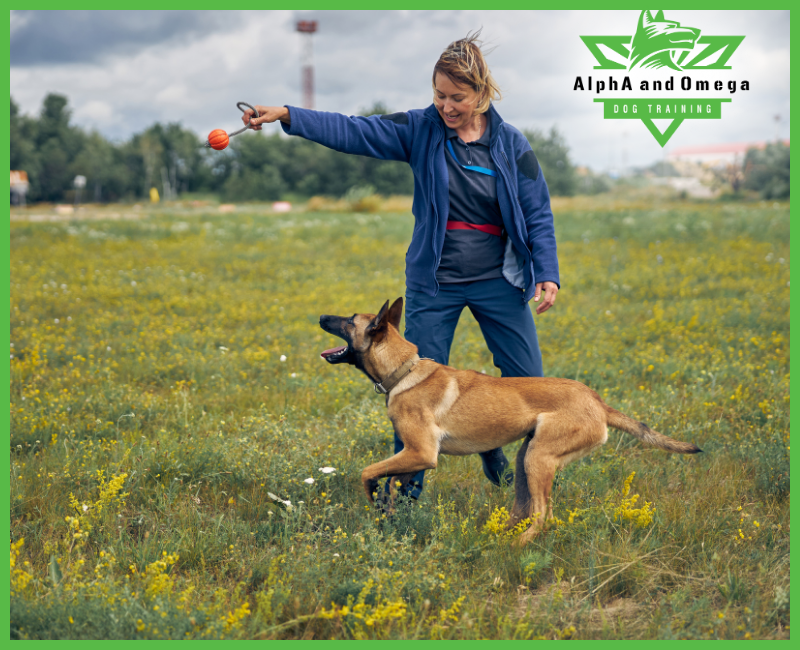
It was long assumed that sleeping with animals was disruptive to sleep, but pet owners actually tend to experience psychological benefits from it. Here’s what you need to know about letting your furry friend onto your bed. We would LOVE to see your pictures and hear if this is permitted in your household. Some people can’t live without it — for others, it’s the only way! We say the choice is usually dependent on where your dog is behaviorally and if they need boundaries where they are on their pack journey. Call us if you want to discuss what would be best for your pack!
Sleeping with a dog or cat is, to many pet owners — or parents, as we might prefer to describe ourselves — a no-brainer. To other people, it’s a clear violation of boundaries, not to mention one of the most divisive bedroom arguments some couples face.
“It’s one of the three major complaints I get all the time,” says psychologist Joel Gavriele-Gold, author of “When Pets Come Between Partners.” The other two? “You love the cat, dog or fish more than you love me. And the other one is usually who’s the better parent.” (In this case, he means to human offspring.)
In some cases, the co-sleeping decision is clear. It’s never a good idea, for example, to share a bed with a new puppy: Dogs need to learn how to sleep by themselves in their crates first, says Steve Brook, a dog trainer and canine behavior expert. “If I get a new dog, I want him to learn that it’s okay to sleep in a room away from me.” Brooks also would want to make sure that the dog is potty-trained, knows basic commands, such as “sit” or “down,” and understands that entering the bed is by invitation only.
Another case where co-sleeping is a no-no is if you have a dog who causes you to “feel any trepidation and fear,” Brooks says. If you roll over and irritate an aggressive dog, you risk getting bitten. Brooks adds that beds aren’t a place to play with toys or wrestle, and suggests spreading a blanket or towel across the bottom of the bed to create a spot your dog knows belongs to them.
If you have an older, even-tempered dog, the conversation becomes about the pros and cons of co-sleeping with your pet. Here they are, along with tips for what to do if you and your partner disagree about the matter.
The pros
Research shows that animals can improve our mental health; for example, studies suggest that human-animal interactions lessen depression while lowering levels of the stress hormone cortisol.
Raj Dasgupta, an assistant professor of clinical medicine at the Keck School of Medicine at the University of Southern California who specializes in pulmonology and sleep medicine, believes those interactions can also help overnight. Slumbering with a pet “may help out with anxiety and depression, because a dog is like a weighted blanket. It gives you that snuggling and cuddling effect,” he said.
According to a small study published in the journal Social Sciences, people who suffered from long-term chronic pain (and as a result, sleep problems) found that snoozing with their pooches was overwhelmingly positive. The companionship and cuddles “were a distraction, so they weren’t lying there worrying about what was going to happen,” says study author Cary Brown, a professor of rehabilitation medicine at the University of Alberta. Sleeping with their pets helped participants feel relaxed and increased their well-being, while countering the loneliness that often accompanies chronic diseases.
Brooks, who has post-traumatic stress disorder, has experienced similar benefits from sleeping with his dog, who is tremendously soothing and gives him a great sense of security. “He’s very healing. … When I get all stressed, he just melts in my arms.”
According to a Mayo Clinic study, humans were able to get good sleep when they had a dog in their room, but their sleep was slightly better if the dog wasn’t on the bed. So, sleeping with your dog nearby, perhaps in a crate, is a good way to maintain restful sleep while still benefiting from a canine’s presence.
Brown is so convinced of the advantages of co-sleeping with pets that she wants to normalize the practice, which she says some owners feel “guilty” about, because they suspect it’s frowned upon by society at large. “A few people told me they were lying to their health-care provider about it,” she says. “We shouldn’t be making people feel guilty because their dog is in the bed.”
The cons
There are, of course, some downsides to sharing your bed with another creature, whether it’s a human or animal. The most obvious is that your sleep could be disturbed. Cats are nocturnal, and dogs are polyphasic sleepers, which means they have about three sleep/wake cycles per hour at night, says Jerry Klein, the American Kennel Club’s chief veterinary officer. Plus, he points out, a natural guard-dog tendency means your pooch will stay alert for sounds and abnormal movement. And, as with any human bedmate, he might also snore or hog your part of the bed.
A more serious drawback is that co-sleeping could be dangerous for children — or the pets. “There’s a possibility that, if a cat is startled or scared, a baby or child could get scratched or bitten,” Klein says, noting that animal bites are one of the more common reasons kids land in the emergency room. The risk of injury goes both ways: When people roll over during the night, small or frail dogs, as well as puppies and kittens, “have been known to get hurt or even worse,” Klein says.
What about germs? Though animals can transmit diseases to humans, or spread such parasites as fleas and ticks, ringworm or mites, that’s unlikely to happen if you’re taking care of your pets and making sure they’re up-to-date on preventive medication and vet checkups. “The hygiene germ issue is really more of a theoretical risk,” says veterinarian Cori Gross, who owns Feline Behavior House Calls and suggests wiping your pet’s paws with a towel before allowing them into your bed if you’re concerned.
Dander is more difficult to eliminate, however, and if you’re allergic to animals, sleeping with your cat or dog can irritate allergies that you can otherwise manage with medication.
Amy Stone, a clinical assistant professor at the University of Florida’s College of Veterinary Medicine, suggests talking with your doctor before making any decisions. Although she’s allergic to dogs and cats, she owns and sleeps with a dog; in fact, she and her husband recently upgraded to a king-size bed to accommodate their greyhound. She runs a lint roller over the bed every day to eliminate fur, which helps keep her allergies under control.
If you and your partner disagree
If sleeping with your pet is an ongoing source of tension — and one partner is threatening to boot the other to the doghouse — don’t panic. Couples can almost always find a happy resolution, Gavriele-Gold says. Here are some tips:
Figure out what’s at the root of your emotion. Gavriele-Gold recalls a newlywed wife who wanted to sleep with her dog, but whose husband was staunchly opposed. “I started asking questions and found out she was an only child and yearned for a sibling her whole life. And before she married this guy, that dog was her sibling.” Her husband, on the other hand, had always shared a bedroom with his brothers and valued having his own space. Tapping into the origins of each person’s desires helped the couple understand each other and agree on a solution about how often the dog would sleep with them. Speaking of which:
Strike a compromise. Often, Gavriele-Gold coaches couples to negotiate a schedule that suits them both. For example, maybe the dog sleeps in the bed three days a week or only on weekends. To make this work, you’ll need to teach your pet to “accept the crate as a safe space, rather than a punishment.” You can situate it in your bedroom, or just outside, he suggests.
Farrauto, the Canadian who likes sleeping with her golden retriever, worked out this agreement with her partner: Riley the dog needs to stay on Farrauto’s side of an imaginary line dividing the bed lengthwise. If there’s too much moving around and spilling onto her partner’s side, Riley gets kicked out. (This happens often, because Riley is famous for sprawling out, then “becoming heavy, like a concrete mass,” Farrauto says.)
A longer-term solution would be to upgrade to a more spacious bed, but that would require moving to a bigger house. Still, Farrauto says, doing so “hasn’t been ruled out as an option.”
Consider a sleep divorce. Couples often prioritize sharing a bed — but that’s not one of the defining factors of a relationship, says Joshua Tal, a psychologist who specializes in sleep disorders. It’s an “archaic” way of thinking, he adds, and “not a statement about the relationship.” If you’d prefer to curl up next to your favorite furry friend at night, and reunite with your human partner in the morning, that might just be a new trick that works for everyone.
Dog training won’t just correct destructive behaviors – it will also exercise your dog’s mind & strengthen the bond with your dog. We are here to show you how. Contact us today at (844) 739-0990 or find more tips on our Facebook page.
Reference: [https://www.washingtonpost.com/lifestyle/2021/11/18/sleeping-with-pets-pros-cons/]





